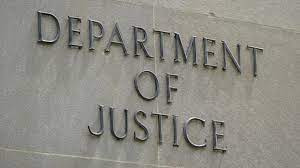The Corficocolombiana FCPA Settlement: the Bribery Scheme (Part II of II)

You can always learn a lot from reviewing the underlying conduct to an FCPA enforcement action. Chief compliance officers can identify specific risk factors, mitigation steps and root causes for bribery schemes.
The Corficocolombiana (“Corfico”) FCPA settlement underscores the significant risks when companies participate in large projects in foreign countries.
Between 2012 and 2015, Corfico paid more than $23 million in bribes to high-ranking Colombian government officials in order to win a contract to construct and operate a highway toll road known as the Ocaña-Gamarra Extension to the largest highway construction project in the history of Colombia, known as Ruta del Sol II (“RDS 2”). In 2009, the Colombian government started the bidding process for the RDS 2, a 328-mile highway infrastructure project. Corfico and Odebrecht was awarded the project in December 2009.
Corfico conspired with Odebrecht S.A. (Odebrecht), a global construction conglomerate based in Brazil, to pay bribes to Colombian government officials in the executive and legislative branches and to an executive at Colombia’s state-owned infrastructure agency. To carry out the bribery scheme, Corfico caused other entities to enter into fictitious contracts with companies associated with intermediaries that passed along the bribe payments to the Colombian government officials. Ultimately, Corfico earned approximately $28.63 million in profits from the corruptly obtained business.

Starting in 2012, Corfico and Odebrecht lobbied the Colombian government to add a proposed road extension project, which was eventually approved. In 2013, an Odebrecht senior executive agreed to pay two individual intermediaries a success fee in exchange for government approval of the Ocaña-Gamarra Extension. The Odebrecht executive knew that a portion of the success fee paid to the intermediaries would in turn be paid to Colombian government officials. The Odebrecht executive informed a Corfico executive about the bribery scheme. The Corfico executive agreed to the bribery scheme and authorized the bribe payments to intermediaries. The Ocaña-Gamarra Extension was formally executed on March 14, 2014, at an overall cost of $350 million, without undergoing a formal tender and competitive bidding process.
Between 2014 to 2016, the Corfico executive caused the joint venture with Odebrecht to pay approximately $28 million in bribes to Colombian officials for the Ocaña-Gamarra Extension.

To disguise these payments, Odebrecht, the Odebrecht executive and Corfico executive used no-work contracts and sham invoices to pay bribes through the Corfico-Odebrecht joint venture to reimburse or pay intermediates directly. These contracts and invoices related to work that were fictitious but recorded as legitimate business expenses, which in turn were consolidated into Grupo Aval’s financial statements that were ultimately filed with the SEC. As a result of the bribery scheme, Corfico and Grupo Aval subsidiaries earned approximately $32 million in improper financial benefit.
The Corfico executive signed various sub-certifications in connection with Grupo Aval’s financial reporting that falsely stated he was unaware of illegal acts. As a result, Corfico caused violations of Grupo Aval’s obligation to keep accurate books and records.















